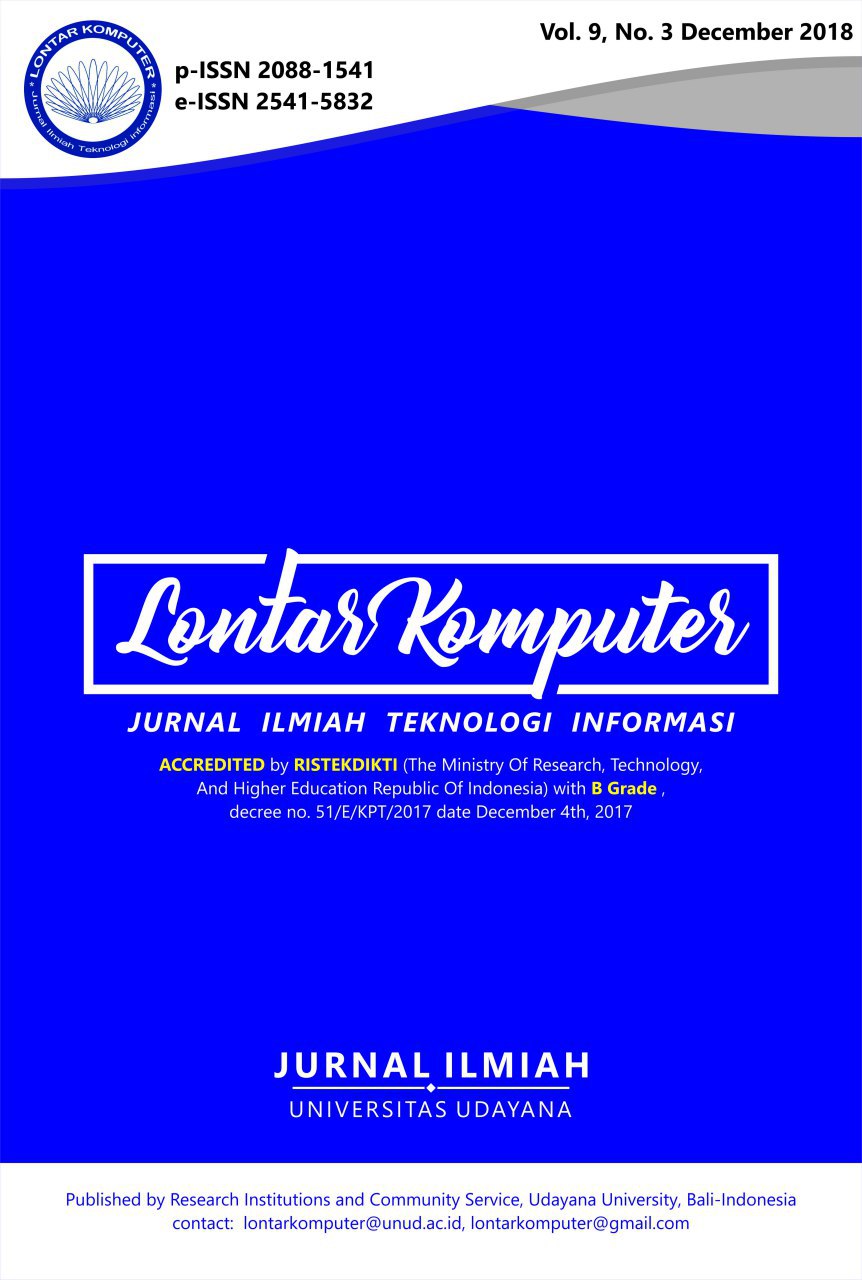New Priorities for Dairy Cows Feed Production System Using Fuzzy-AHP
Abstract
Management criteria can be used as the deciding device of the performance of dairy cows feed production system successfulness by prioritizing those criteria, and it can be used as an improvement step. The aim of this study was to determine the priority of management criteria and established the improvement step to increase the performances of the dairy cows feed production system in Batu, East Java by prioritizing four management criteria (Planning, Organizing, Directing, and Controlling). The method used the Fuzzy Analytic Hierarchy Process (Fuzzy-AHP) which is a combination of two methods, Analytic Hierarchy Process (AHP) and fuzzy logic. Fuzzy AHP is proposing an evaluation tool which inherits advantages from that two methods. Fuzzy AHP will translate decisions makers comparison judgment into the fuzzy number. There were three highest priorities for management criteria, namely goal planning for the long-term from planning criteria, divisions of work from organizing criteria, and activator from controlling criteria. It was concluded that those three highest management criteria could be established as an improvement step for the performances of dairy cows feed production system.
Downloads
References
[2] E. Wina, Y. Widiawaty, B. Tangendjaja, and S. Iwr, “Supplementation of Calcium-Fatty Acid to Increase Milk Production and Performance of Lactating Dairy Cow,” pp. 287–293, 2014.
[3] A. Baghdadi, R. A. Halim, A. Ghasemzadeh, M. Ebrahimi, R. Othman, and M. M. Yusof, “Effect of intercropping of corn and soybean on dry matter yield and nutritive value of forage corn,” Legume Research, vol. 39, no. 6, pp. 976–981, 2016.
[4] Badan Pusat Statistik, “Badan Pusat Statistik.” p. 1, 2017.
[5] M. Morantes, R. Dios-Palomares, M. E. Peña, J. Rivas, J. Perea, and A. García-Martínez, “Management and productivity of dairy sheep production systems in Castilla-La Mancha, Spain,” Small Ruminant Research, vol. 149, pp. 62–72, 2017.
[6] E. Pe, “Management functions and productivity in dual-purpose cattle systems in Venezuela . An index-based study,” no. January, 2014.
[7] D. Chatterjee, “A Study on The Comparison of AHP And Fuzzy AHP Evaluations of Private Technical Institutions in India,” no. 1, pp. 283–291, 2013.
[8] D. E. and F. E., “A Fuzzy AHP Model for Selection of University Academic Staff,” International Journal of Computer Applications, vol. 141, no. 1, pp. 19–26, 2016.
[9] H.-T. Nguyen, S. Z. Md Dawal, Y. Nukman, H. Aoyama, and K. Case, “An Integrated Approach of Fuzzy Linguistic Preference Based AHP and Fuzzy COPRAS for Machine Tool Evaluation,” Plos One, vol. 10, no. 9, p. e0133599, 2015.
[10] H. M. M. M. Jayawickrama, A. K. Kulatunga, and S. Mathavan, “Fuzzy AHP based Plant Sustainability Evaluation Method,” Procedia Manufacturing, vol. 8, no. October 2016, pp. 571–578, 2017.
[11] M. B. Javanbarg, C. Scawthorn, J. Kiyono, and B. Shahbodaghkhan, “Fuzzy AHP-based multicriteria decision making systems using particle swarm optimization,” Expert Systems with Applications, vol. 39, no. 1, pp. 960–966, 2012.
[12] H. R. Mirzaei, E. Shahraki, M. Tavakoli, and M. Rojuee, “Planning New Management Approach for Milk Production Using the SWOT and the Fuzzy AHP Model ( A case study in the Sistan and Baloochestan province ),” vol. 4, no. 7, pp. 1447–1461, 2013.
[13] M. Modak, K. Pathak, and K. K. Ghosh, “Performance evaluation of outsourcing decision using a BSC and Fuzzy AHP approach: A case of the Indian coal mining organization,” Resources Policy, vol. 52, no. March, pp. 181–191, 2017.
[14] M. Cengiz Toklu, M. B. Erdem, and H. Taşkın, “A fuzzy sequential model for realization of strategic planning in manufacturing firms,” Computers and Industrial Engineering, vol. 102, pp. 512–519, 2016.
[15] M. Bouchard, S. D’Amours, M. Rönnqvist, R. Azouzi, and E. Gunn, “Integrated optimization of strategic and tactical planning decisions in forestry,” European Journal of Operational Research, vol. 259, no. 3, pp. 1132–1143, 2017.
[16] L. Lobanova and I. Ozolina-Ozola, “Comparative Evaluation of the Practical Areas of Human Resource Management in Lithuania and Latvia,” Procedia - Social and Behavioral Sciences, vol. 110, pp. 607–616, 2014.
[17] C. M. Lu, S. J. Chen, P. C. Huang, and J. C. Chien, “Effect of diversity on human resource management and organizational performance,” Journal of Business Research, vol. 68, no. 4, pp. 857–861, 2015.
[18] M. Schraeder, D. R. Self, M. H. Jordan, and R. Portis, “The Functions of Management as Mechanisms for Fostering Interpersonal Trust,” Advances in Business Research, vol. 5, pp. 50–62, 2014.
[19] N. D. Retnani and D. Ardyanto, “Analisis Pengaruh Activator dan Consequence terhadap Safe Behaviour pada Tenaga Kerja di PT. Pupuk Kalimantan Timur,” The Indonesian Journal of Occupational Safety and Health, vol. 2, pp. 119–129, 2013.
[20] M. Čech, W. Yao, A. Samolejová, J. Li, and P. Wicher, “Human Resource Management in Chinese manufacturing companies,” Perspectives in Science, vol. 7, pp. 6–9, 2016.
The Authors submitting a manuscript do so on the understanding that if accepted for publication, the copyright of the article shall be assigned to Jurnal Lontar Komputer as the publisher of the journal. Copyright encompasses exclusive rights to reproduce and deliver the article in all forms and media, as well as translations. The reproduction of any part of this journal (printed or online) will be allowed only with written permission from Jurnal Lontar Komputer. The Editorial Board of Jurnal Lontar Komputer makes every effort to ensure that no wrong or misleading data, opinions, or statements be published in the journal.
 This work is licensed under a Creative Commons Attribution 4.0 International License.
This work is licensed under a Creative Commons Attribution 4.0 International License.























